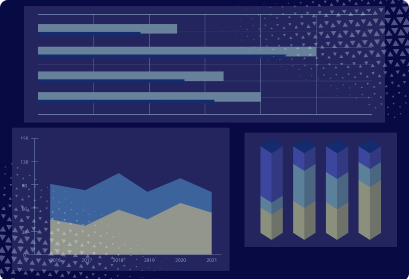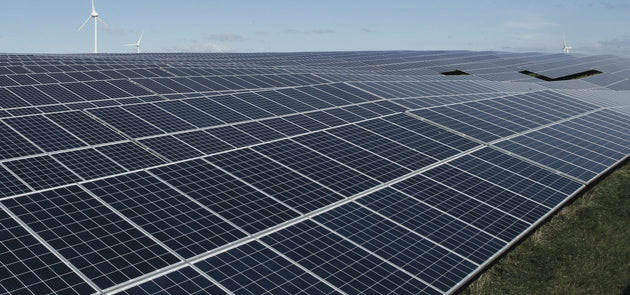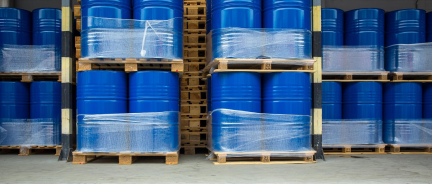Role of Copper Wires In The Success Of The Alternative Energy Sector
The demand for copper and the prices increase with economic activity, making copper an indicator of international economic growth. For this reason, copper is jokingly nicknamed "Dr. Copper" by scientists and economists. Recently, the demand for copper has been a record high, causing the prices to skyrocket.
Copper prices are a hot topic not only because this metal is an essential component of modern life but because it plays a key role in the renewable energy sector. Growing prices impact the future of the industry that will become the centerfold of the economy in the upcoming decades. In this article, we discuss the role of copper wires in alternative energy, the connection between the renewable industry and the copper price surge, and potential solutions to the copper supply-demand crisis.
Role of Copper Wires in Alternative Energy
Copper is the key metal in renewable energy, with no other metal able to serve the functions as effectively. Copper is used with renewables because it is the most effective conductor of electricity. Moreover, the factor that makes copper perfect for renewable energy is that it is a recyclable metal that sustains hundreds of recycling cycles without a significant loss of performance. What is more, copper is a perfect conductor of high heat; it is resistant to corrosion and wearing off, and it has superior mechanical strength.
In alternative energy, copper is most often used for solar and wind power. For solar power, copper is a forming material of the photovoltaic cells in cabling. It is also used for most elements of a photovoltaic construction. It is also a significant component of solar heating engines. For wind energy, copper is extensively used in generators, cabling, and earthing of wind turbines.
Aside from renewable energy, copper is widely applied in the growing electric vehicles sector because of its high conductivity. It is used in wiring, batteries, car charging stations, motors, and other significant engine components.
Effect Of Rising Copper Prices On Renewable Energy
The price of copper reached its record high in May 2021. We discuss the reasons why copper prices have reached their record high in the blog.
Today, most experts agree that the copper prices will stay within the window of $8000-$10000, without ever dropping below $8000. The experts at Goldman Sachs give more radical numbers regarding copper prices, estimating that the copper demand will grow 600%, and the prices may double and reach $20000 within the next few years. By 2030, the market can face an 8.2 million ton supply gap if the demand grows and the supply practices remain the same.
The renewable energy market fuels the demand for copper and contributes to prices rising. At the same time, it is being harmed by the rising prices in what feels like a closed loop. Many promising renewable energy companies worldwide had to lower investor expectations already because of the upcoming copper supply issues.
For one thing, renewable energy and electric vehicles use more copper than traditional industries and gas cars. For example, while there are approximately 50 pounds of copper in a gas car, electric vehicles use 3,5 times more copper because there are more electronics in an electric vehicle. The same goes for solar, wind, and water alternative energy, all of which produce staggering demand on copper that is about 4-6 times higher than the demand for copper in traditional energy. This fact demonstrates why the demand for copper is growing at such a fast pace.
Why is there a risk of copper shortage?
This is a very complex question, and one thing that should be highlighted here is that copper is not like other non-renewable metals with the supply that runs out because of our growing demand.
Unlike other natural resources we use every day, copper is easily recyclable. This means that most copper on Earth has not yet been mined and remains under the ground. Approximately 12 percent of the copper on Earth has been mined throughout history. Most of the copper that was mined centuries ago remains in circulation.
When the experts talk about the upcoming copper shortage, what they essentially mean is not that the world will run out of copper but that the current infrastructure for mining and recycling will not meet the upcoming demand for copper coming from producing renewable energy and electric car manufacturing.
What can be done to soften the blow of growing copper prices on the renewable energy sector?
- New Investments In Copper. To avoid the damaging impact of the crisis, about 100 billion dollars should be poured into the copper industry by 2030.
- Facilitating Copper Mining Projects To Meet Growing Demand. The world is in desperate need of new copper to support the demand. However, expanding mining to a sufficient level will likely take at least 5-10 years with the current state of things. However, new technologies are popping up that are looking for new, sustainable ways to extract copper that has been deemed non-extractable before.
- Looking For Alternative Metals to Replace Copper. While an unlikely scenario, the companies can turn to alternative metals if the demand for copper is too high to sustain.
Ultimately, there is a silver lining for the renewable energy sector with the current high prices. The high demand for copper makes investors turn their eyes to projects related to copper mining technologies that would otherwise be overlooked, facilitating the development of the industry and paving the way for solutions that would help solve the upcoming supply gap.


















